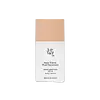What's inside
What's inside
 Key Ingredients
Key Ingredients

 Benefits
Benefits

 Concerns
Concerns

 Ingredients Side-by-side
Ingredients Side-by-side

Zinc Oxide
Cosmetic ColorantWater
Skin ConditioningButyloctyl Salicylate
Skin ConditioningIsopropyl Myristate
EmollientCoco-Caprylate/Caprate
EmollientCaprylic/Capric Triglyceride
MaskingNeopentyl Glycol Diheptanoate
EmollientEthylhexyl Isononanoate
EmollientAlcohol Denat.
AntimicrobialPolyglyceryl-3 Polyricinoleate
EmulsifyingButylene Glycol
HumectantC12-15 Alkyl Benzoate
AntimicrobialPropanediol
SolventSilica
AbrasiveMethyl Methacrylate Crosspolymer
Stearic Acid
CleansingPolyglyceryl-6 Polyhydroxystearate
EmulsifyingHydrogenated Olive Oil Unsaponifiables
EmollientArtemisia Capillaris Extract
Polyglyceryl-4 Diisostearate/Polyhydroxystearate/Sebacate
EmulsifyingStearalkonium Hectorite
Gel FormingUndecane
Emollient1,2-Hexanediol
Skin ConditioningPolyglyceryl-6 Polyricinoleate
EmulsifyingHydroxyacetophenone
AntioxidantTridecane
PerfumingPolyglycerin-6
HumectantIsopropyl Titanium Triisostearate
EmollientTocopherol
AntioxidantAscorbyl Palmitate
AntioxidantCI 77492
Cosmetic ColorantCI 77491
Cosmetic ColorantCI 77499
Cosmetic ColorantZinc Oxide, Water, Butyloctyl Salicylate, Isopropyl Myristate, Coco-Caprylate/Caprate, Caprylic/Capric Triglyceride, Neopentyl Glycol Diheptanoate, Ethylhexyl Isononanoate, Alcohol Denat., Polyglyceryl-3 Polyricinoleate, Butylene Glycol, C12-15 Alkyl Benzoate, Propanediol, Silica, Methyl Methacrylate Crosspolymer, Stearic Acid, Polyglyceryl-6 Polyhydroxystearate, Hydrogenated Olive Oil Unsaponifiables, Artemisia Capillaris Extract, Polyglyceryl-4 Diisostearate/Polyhydroxystearate/Sebacate, Stearalkonium Hectorite, Undecane, 1,2-Hexanediol, Polyglyceryl-6 Polyricinoleate, Hydroxyacetophenone, Tridecane, Polyglycerin-6, Isopropyl Titanium Triisostearate, Tocopherol, Ascorbyl Palmitate, CI 77492, CI 77491, CI 77499
Water
Skin ConditioningEthylhexyl Palmitate
EmollientGlycerin
HumectantIsododecane
EmollientDiethylhexyl Carbonate
EmollientIsohexadecane
EmollientPolyglyceryl-4 Diisostearate/Polyhydroxystearate/Sebacate
EmulsifyingPolymethylsilsesquioxane
Trimethylsiloxysilicate
EmollientSodium Chloride
MaskingC13-15 Alkane
SolventSodium Hyaluronate
HumectantSqualane
EmollientNiacinamide
SmoothingCentella Asiatica Leaf Extract
Skin ConditioningTocopheryl Acetate
AntioxidantTocopherol
AntioxidantPersea Gratissima Oil
Skin ConditioningCamellia Sinensis Leaf Extract
AntimicrobialCarthamus Tinctorius Seed Oil
MaskingGlycine Soja Oil
EmollientEthylhexylglycerin
Skin ConditioningHydrogenated Vegetable Oil
EmollientSilica
AbrasiveAlumina
AbrasiveDisteardimonium Hectorite
StabilisingMagnesium Oxide
AbsorbentPropylene Carbonate
SolventZinc Stearate
Cosmetic ColorantBoron Nitride
AbsorbentSodium Benzoate
MaskingPotassium Sorbate
PreservativeCaprylyl Glycol
EmollientPhenoxyethanol
PreservativeTitanium Dioxide
Cosmetic ColorantIron Oxides
Water, Ethylhexyl Palmitate, Glycerin, Isododecane, Diethylhexyl Carbonate, Isohexadecane, Polyglyceryl-4 Diisostearate/Polyhydroxystearate/Sebacate, Polymethylsilsesquioxane, Trimethylsiloxysilicate, Sodium Chloride, C13-15 Alkane, Sodium Hyaluronate, Squalane, Niacinamide, Centella Asiatica Leaf Extract, Tocopheryl Acetate, Tocopherol, Persea Gratissima Oil, Camellia Sinensis Leaf Extract, Carthamus Tinctorius Seed Oil, Glycine Soja Oil, Ethylhexylglycerin, Hydrogenated Vegetable Oil, Silica, Alumina, Disteardimonium Hectorite, Magnesium Oxide, Propylene Carbonate, Zinc Stearate, Boron Nitride, Sodium Benzoate, Potassium Sorbate, Caprylyl Glycol, Phenoxyethanol, Titanium Dioxide, Iron Oxides
 Reviews
Reviews

Ingredients Explained
These ingredients are found in both products.
Ingredients higher up in an ingredient list are typically present in a larger amount.
Polyglyceryl-4 Diisostearate/Polyhydroxystearate/Sebacate isn't fungal acne safe.
Silica, also known as silicon dioxide, is a naturally occurring mineral. It is used as a fine, spherical, and porous powder in cosmetics.
Though it has exfoliant properties, the function of silica varies depending on the product.
The unique structure of silica enhances the spreadability and adds smoothness, making it a great texture enhancer.
It is also used as an active carrier, emulsifier, and mattifier due to its ability to absorb excess oil.
In some products, tiny microneedles called spicules are made from silica or hydrolyzed sponge. When you rub them in, they lightly polish away dead skin layers and enhance the penetration of active ingredients.
Learn more about SilicaTocopherol (also known as Vitamin E) is a common antioxidant used to help protect the skin from free-radicals and strengthen the skin barrier. It's also fat soluble - this means our skin is great at absorbing it.
Vitamin E also helps keep your natural skin lipids healthy. Your lipid skin barrier naturally consists of lipids, ceramides, and fatty acids. Vitamin E offers extra protection for your skin’s lipid barrier, keeping your skin healthy and nourished.
Another benefit is a bit of UV protection. Vitamin E helps reduce the damage caused by UVB rays. (It should not replace your sunscreen). Combining it with Vitamin C can decrease sunburned cells and hyperpigmentation after UV exposure.
You might have noticed Vitamin E + C often paired together. This is because it is great at stabilizing Vitamin C. Using the two together helps increase the effectiveness of both ingredients.
There are often claims that Vitamin E can reduce/prevent scarring, but these claims haven't been confirmed by scientific research.
Learn more about TocopherolWater. It's the most common cosmetic ingredient of all. You'll usually see it at the top of ingredient lists, meaning that it makes up the largest part of the product.
So why is it so popular? Water most often acts as a solvent - this means that it helps dissolve other ingredients into the formulation.
You'll also recognize water as that liquid we all need to stay alive. If you see this, drink a glass of water. Stay hydrated!
Learn more about Water